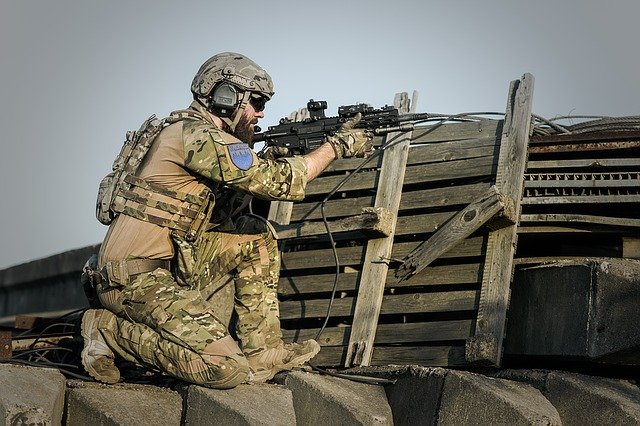How the NATO phonetic alphabet helped communication in the armed forces
Image by Dariusz Sankowski from Pixabay
Many people now use the military phonetic alphabet in their everyday lives such as banks and call centers communicating with customers when spelling out their information, or many airlines use it in order to spell out their passengers’ names phonetically. But did you know that this phonetic alphabet was once actually classified by the U.S government?
It is certain that we all have heard the phonetic alphabet or military slang because it has been used in war or military-themed blockbuster films, with phrases such ‘Roger that’ being used.
You might wonder how soldiers actually communicated during the war times so that their enemies could not understand them. It’s a fascinating theory to look into, but there are actual facts such as the NATO phonetic alphabet that helped many soldiers win the wars that’s in our history books today.
How did it help the armed forces?
Due to the familiarity of the sounds of the English letters such as M and N, it had become difficult for members of the armed forces to communicate with each other. This led to life threatening situations or choices that would affect their future as a whole.
This phonetic alphabet wasn’t used to teach English, but to communicate clearly and understand each other and to prevent misunderstanding pronunciation; especially because it was common for them to have different accents.
This resulted in radio operators using the military alphabet in order to communicate with the armed forces and to deliver valuable information that could possibly save them from death in the hands of an enemy. As both women and men continued to use the alphabet, it soon developed into shorthand military slang which is what we know and hear in films today.
Where does the term NATO come from?
Even though evidence shows the term ‘NATO Alphabet’ was used prior to the cold war, because it was meant to be an alternative name for the ICAO phonetic alphabet, it was actually the U.S. military during World War One that used the first spelling alphabet that had been developed.
Although, during the cold war the navies of the NATO members used the phonetic alphabet because it was developed as a publication for them to use which made up of unique symbols for Morse code. However, after that, it became classified by the government..
But in 1927, the International Telegraph Union (ITU) had created its own version of the spelling alphabet that would help further communication globally through telegrams. As the years went by, there were several changes made to the alphabet and an expansion of communication within areas. It was also later used in 1941 during the Second World War, with a mixture of the Navy and Army phonetic alphabet together.
It wasn’t until 1956, after research, testing and the finalization of the Radiotelephony Spelling Alphabet by ICAO that took place across 31 different countries, that the NATO alphabet became official.
An example of how the phonetic alphabet developed from how it was first used to how it is today is that the letter A that was symbolized as:
- . _ – Morse code
- Able – in 1913 by RAF
- Amsterdam – by ITU in 1927 for WW2
- Affirm – by Joint Army for WW2
- Alpha – by IRSA in 1957 up until this present moment.
Why we respect the NATO phonetic alphabet
The NATO phonetic alphabet has evolved immensely that it can now be of great use when communicating with others in important work environments such as the banking or aircraft sector. It has also proven that the use of the military phonetic alphabet had successfully broken down the communication barriers that had caused recurring problems in the past. In regards to the history of forming the spelling for the alphabet, it resulted in creating allies between 31 countries that are still using this type of alphabet today.
Our way
History has taught us many things that are both good and bad, but it has also shown proof that you can really think out of the box in any situation, whether it’s life-threatening or not. It has also taught us that the use of language can be flexible and formed into something out of the ordinary and has contributed to all choices that have led up to today.

